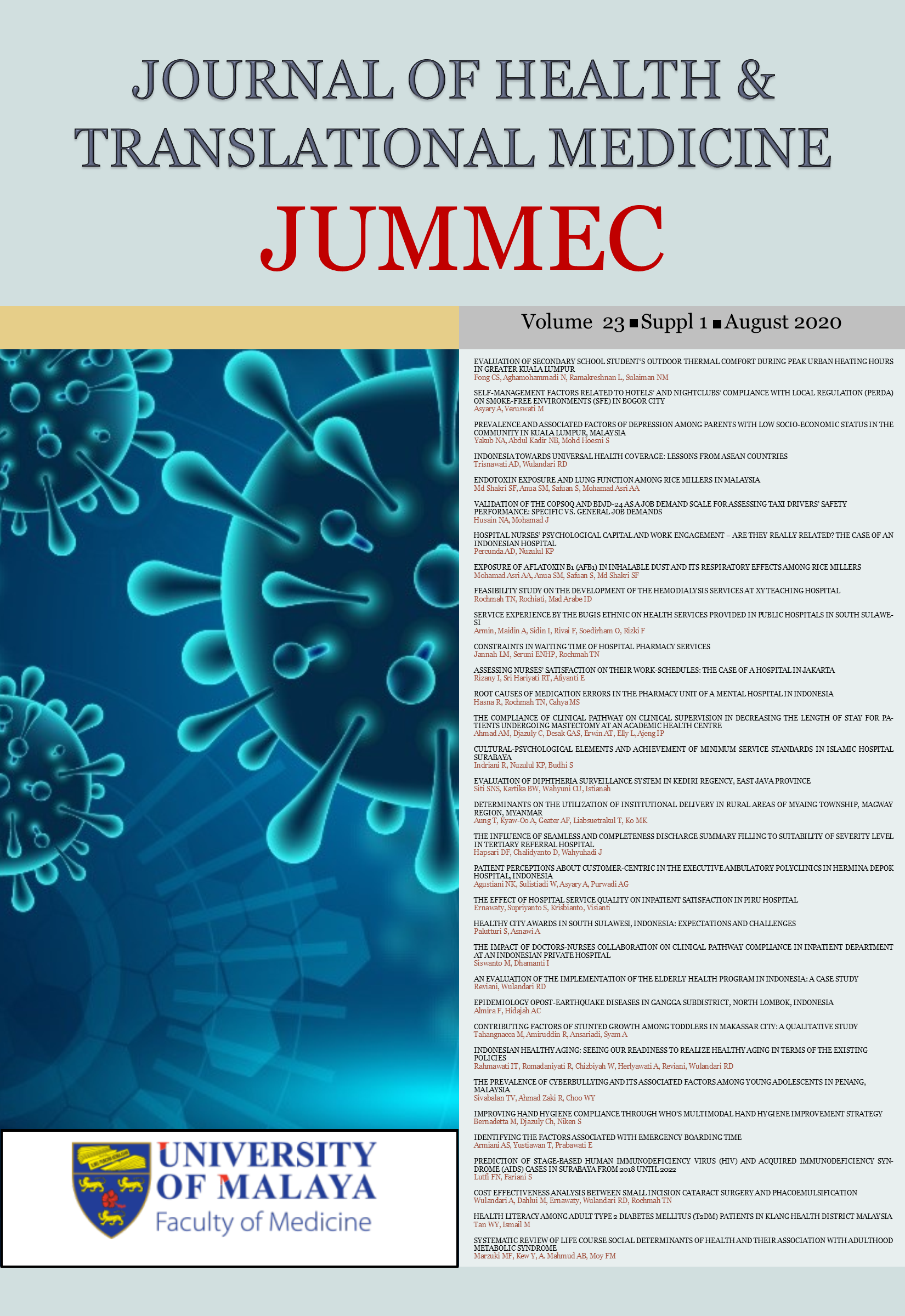ENDOTOXIN EXPOSURE AND LUNG FUNCTION AMONG RICE MILLERS IN MALAYSIA
Keywords:
Airborne exposure, Endotoxin, Lung function test, Rice millerAbstract
Introduction: The health effects of inhaling rice dust contaminated with endotoxin include respiratory problems, asthma, chronic bronchitis and chronic obstructive pulmonary disease. Thus, this comparative cross-sectional study aims to associate the concentration of endotoxin levels in inhalable rice dust and the lung function decline among rice millers.
Materials and Methods: The endotoxin level in inhalable dust for both area and personal samplings were collected using 25 mm Glass Fiber (A) filter loaded in IOM samplers connected to a pump by tygon tubing. The pump was operated at 2.0 litres/min and clipped around the breathing zone of the rice millers for eight hours. The endotoxin concentrations were analysed using Limulus Amoebocyte Lysate Chromogenic Endpoint assay at 405 nm. Lung function tests were carried out using Spirometer (Pony FX), for both the rice millers and the non-exposed groups.
Results: Findings for the mean concentration of endotoxin for areas was 0.26 (standard deviation (SD) = 0.12) EU/m3 whereas the mean personal inhalable endotoxin level among the rice millers was 0.29 (SD = 0.15) EU/m3. Post-shift lung function tests for FEV1/FVC measured appeared lower among rice millers (54%) compared to non-exposed workers (62%), but not statistically significant (p = 0.313). However, there were significant correlations between endotoxin concentration and post-shift LFT parameters of measured FVC, FEV1 and PEFR (p < 0.05).
Conclusion: Despite the low level of endotoxin exposure, proper protective measures should be applied for rice millers for long term protection.
Downloads
Downloads
Published
Issue
Section
License
All authors agree that the article, if editorially accepted for publication, shall be licensed under the Creative Commons Attribution License 4.0 to allow others to freely access, copy and use research provided the author is correctly attributed, unless otherwise stated. All articles are available online without charge or other barriers to access. However, anyone wishing to reproduce large quantities of an article (250+) should inform the publisher. Any opinion expressed in the articles are those of the authors and do not reflect that of the University of Malaya, 50603 Kuala Lumpur, Malaysia.


